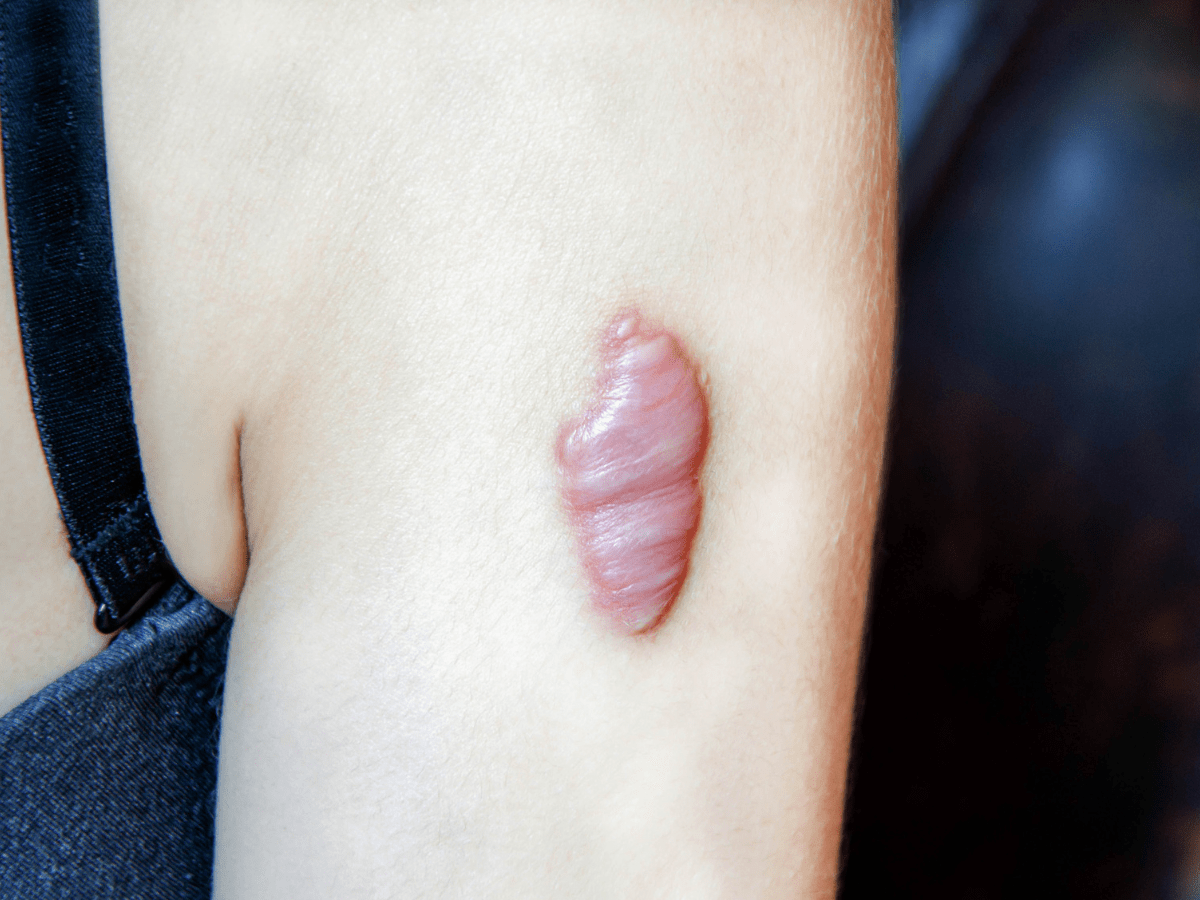About Keloid and Hypertrophic Scars
A keloid is a bump or nodule that forms on the body at the point of an injury or open wound on the skin. Keloids are usually red or deep purple in color.
Causes
The body attempts to heal the skin from the injury and begins to form more tissue to replace the damaged tissue. This creates a fibrous tissue above the skin, which is what makes the raised keloid. Keloids are sometimes confused with hypertrophic scars. They are more common than keloids and do not get quite as large. Usually, keloids and hypertrophic scars are not harmful.
Keloids are more often seen in those with a darker skin tone, while hypertrophic scars are found in those of all skin types. They equally affect both genders.
Risk Factors
Along with discoloration of the skin, a keloid may also cause itching and slight pain or discomfort.
Symptoms
The keloid will start forming from 3 months to a year after original skin damage. They’re most common on the breast bone, shoulder, earlobe, and cheek. You will probably first notice scar tissue growing past the borders of the original damage. It can become tender, itchy, painful, or produce a burning sensation.
Diagnosis
A doctor will be able to diagnose a keloid or hypertrophic scar with an examination. The most common treatment for both keloids and hypertrophic scars is a cortisone steroid injection. It causes the keloid to lessen in size and the hypertrophic scar to disappear altogether. Cryosurgery and laser treatment are also available for keloids.
Visit Virginia Dermatology & Skin Cancer Center
Our team provides thoughtful, expert care for all your general, surgical and cosmetic dermatological needs. We are proud to offer the most advanced dermatological services in Norfolk, Suffolk, Newport News, and surrounding areas.


